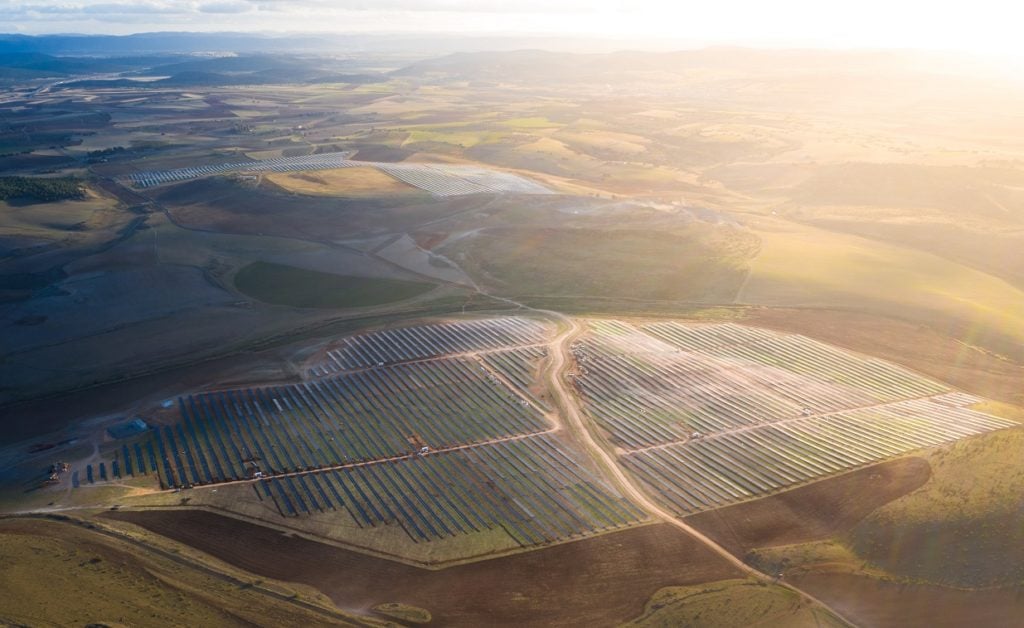
Developers will need to install the equivalent of “the world’s largest solar park roughly every day” by 2030 to support global net-zero emissions targets, according to a new report.
The International Energy Agency (IEA) has released its first Net-Zero Strategy today (18 May). Called Net Zero by 2050: A roadmap for the global energy system, it examines the changes to industry, infrastructure, the power mix and investment the energy watchdog believes are needed to reach carbon neutrality by mid-century.
Try Premium for just $1
- Full premium access for the first month at only $1
- Converts to an annual rate after 30 days unless cancelled
- Cancel anytime during the trial period
Premium Benefits
- Expert industry analysis and interviews
- Digital access to PV Tech Power journal
- Exclusive event discounts
Or get the full Premium subscription right away
Or continue reading this article for free
The document, which has been produced to “inform” global leaders ahead of the 26th Conference of the Parties (COP26) this November, said renewables are “key to reducing emissions” in the power mix, but capacity needs to scale up significantly in 30 years time. Fatih Birol, IEA’s executive director, said that the roadmap shows that the chance of reaching net-zero by 2050 is “narrow but not lost”. However, the speed and scale of action required across all sectors make it “the greatest challenge humankind has ever faced”.
The report states that the world will need 630GW of solar energy capacity each year by 2030 for the industry to support a global net-zero target, up from the 135GW the organisation said was installed last year. Some 240 million homeowners will need to have rooftop PV installations by 2050, and renewables will need to make up 88% of the global power mix to neutralise carbon emissions. At the moment, roughly 25 million homes have rooftop solar in place.
Whenever possible, IEA said, new and existing buildings “should integrate locally available renewable resources” such as solar PV.
This figure would need to be higher if bioenergy capacity is discounted. The report states that an increase in global sustainable bioenergy use is not guaranteed, particularly as it is uncertain how much land can be converted for bioenergy production.
To achieve net-zero emissions without expanding bioenergy land use, developers would need to deploy 24TW of solar PV and wind and almost 350GW of additional battery capacity in 2050. Failure to deploy carbon capture technology for fossil fuel power plants or “take timely decisions” on nuclear power would also see demand for solar capacity “significantly increase”, calling for 24TW more power than in the IEA’s primary net-zero emissions model.
In a separate report, the energy watchdog said last week (11 May) it expects annual solar PV additions to surpass 160GW by 2022, positioning it as the “new king” of global electricity markets. This figure is lower than predictions from analyst BloombergNEF, which states that said PV installs could reach as much as 221GW in 2022 and 240GW in 2023.
Birol said that, if the strategy is followed by global industry leaders, it will bring “a historic surge in clean energy investment”. Total annual capital investment in energy, it said, will need to rise from around 2.5% of global GDP, where the report states it has sat in recent years, to about 4.5% in 2030, sitting at roughly US$1.6 trillion. The share of fossil fuels in the global power mix will also have to fall from around 25% in recent years to just 7% by 2050. Investment in grid updates and expansions will also be “crucial to achieving” net zero, the report said. IEA predicts that global capital spend on electricity networks will exceed US$900 billion by 2040.
Birol called the mission to reach net zero globally a “huge opportunity” for global economies. “We have to ensure that developing economies receive the financing and technological know-how they need to build out their energy systems to meet the needs of their expanding populations and economies in a sustainable way.”






